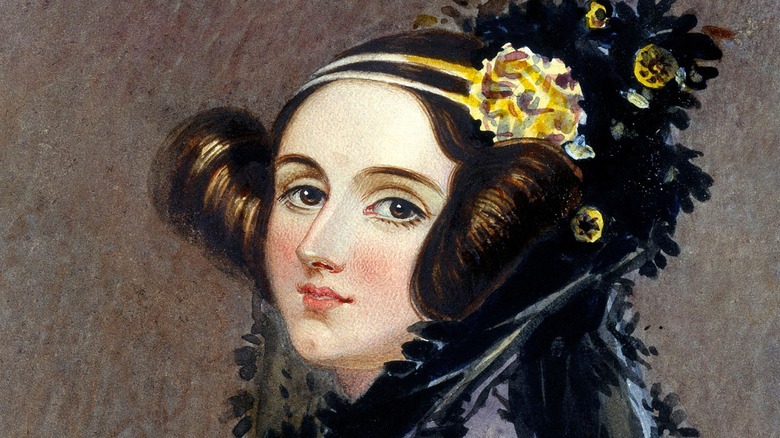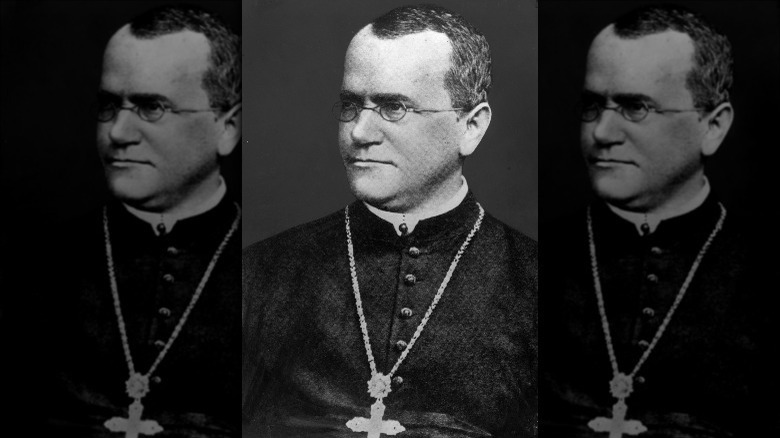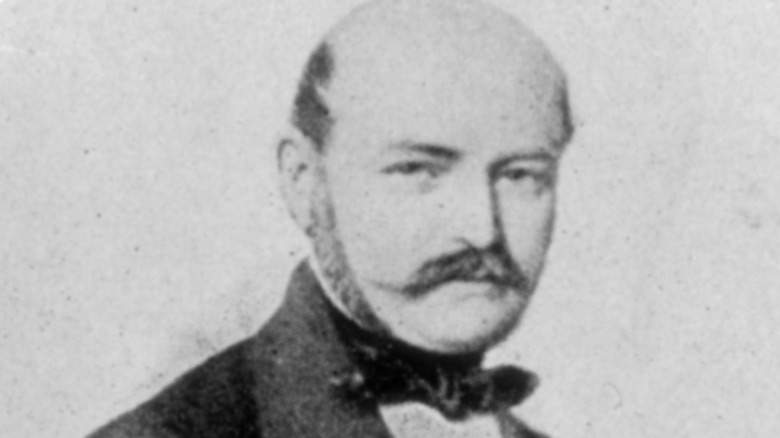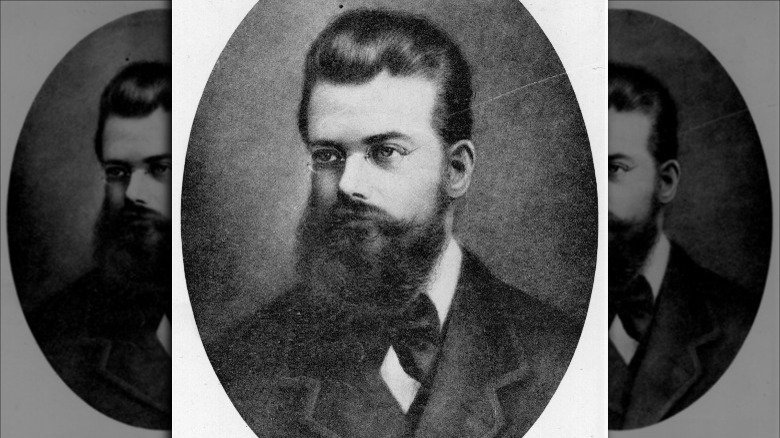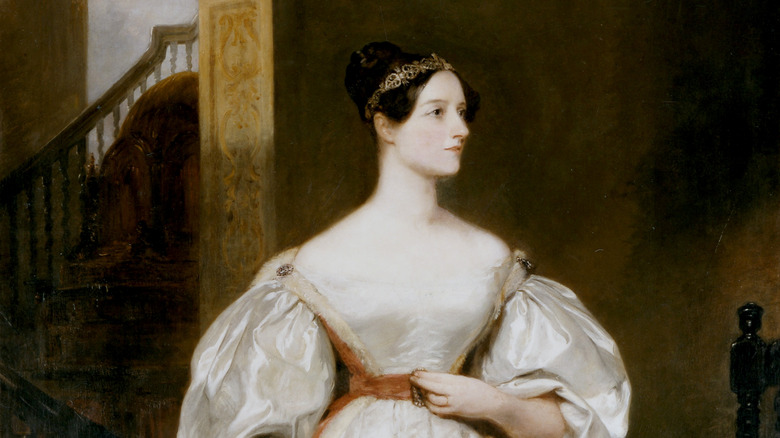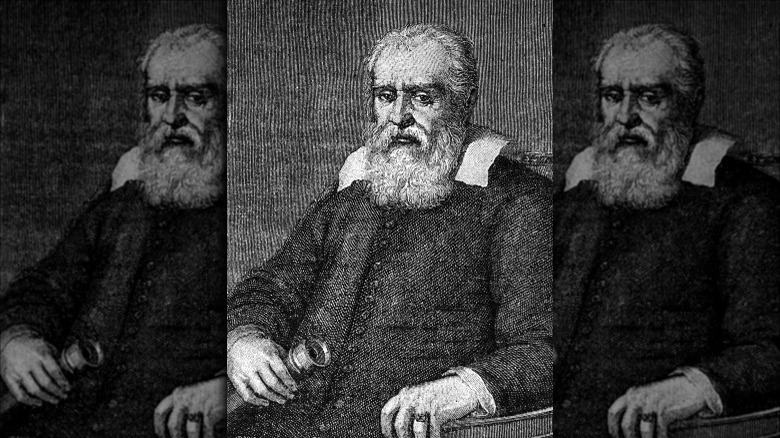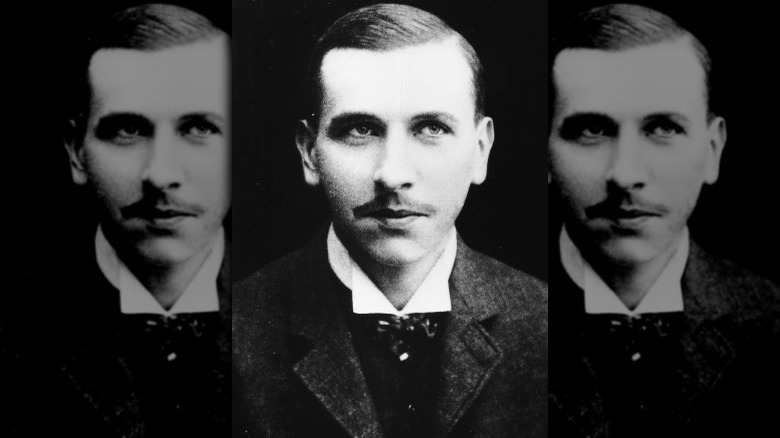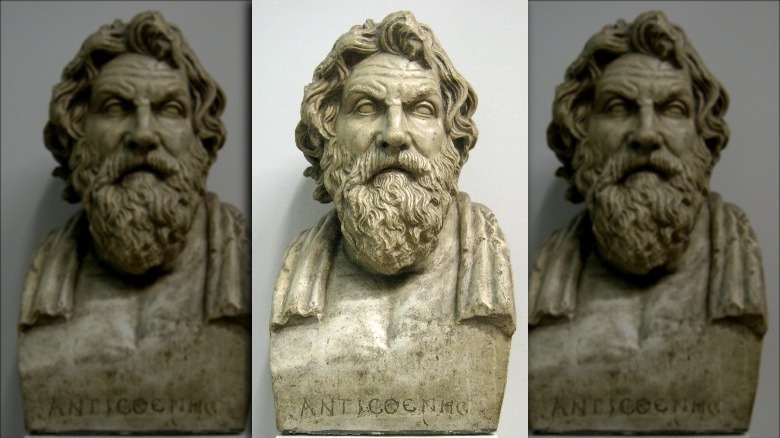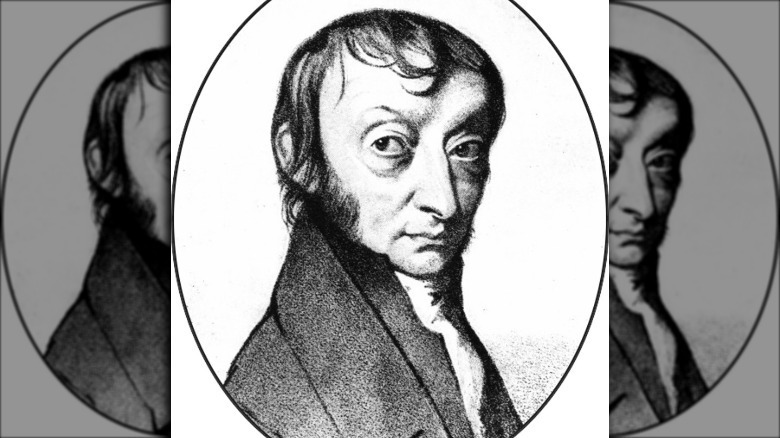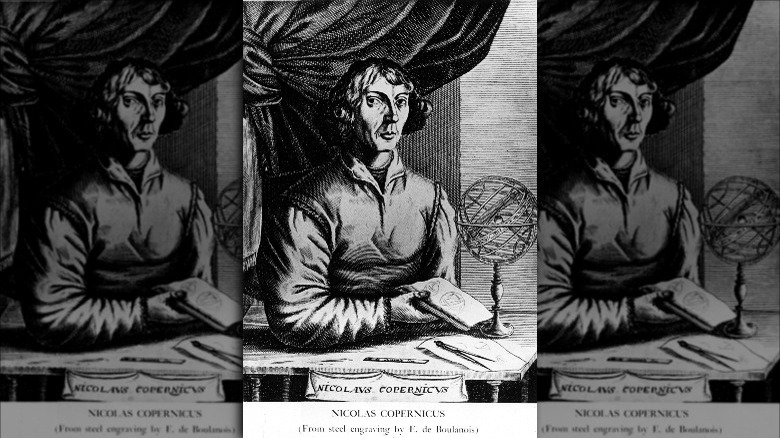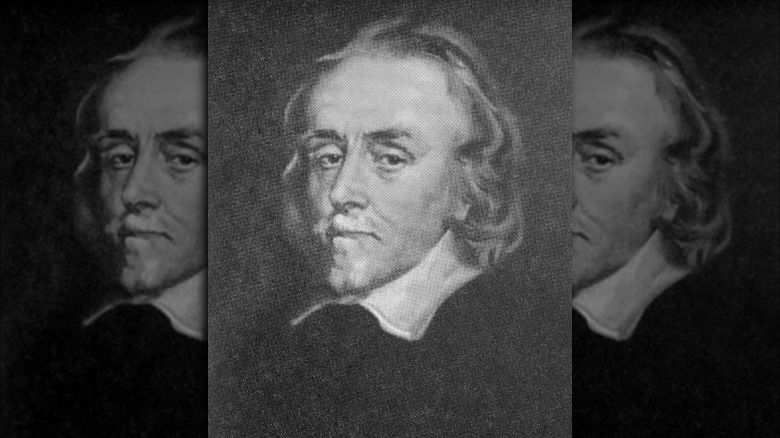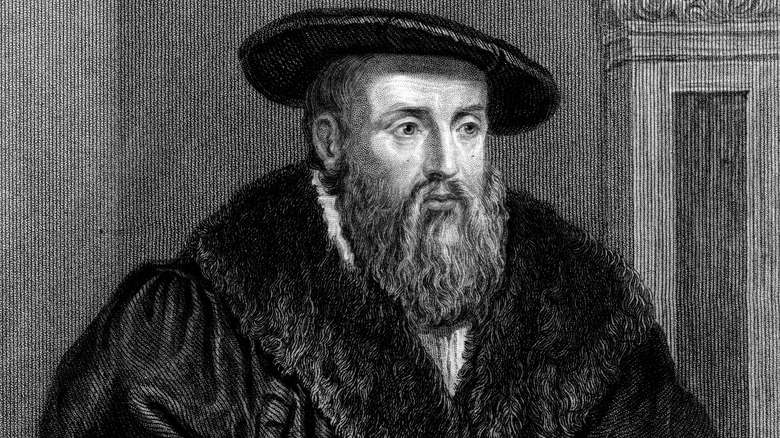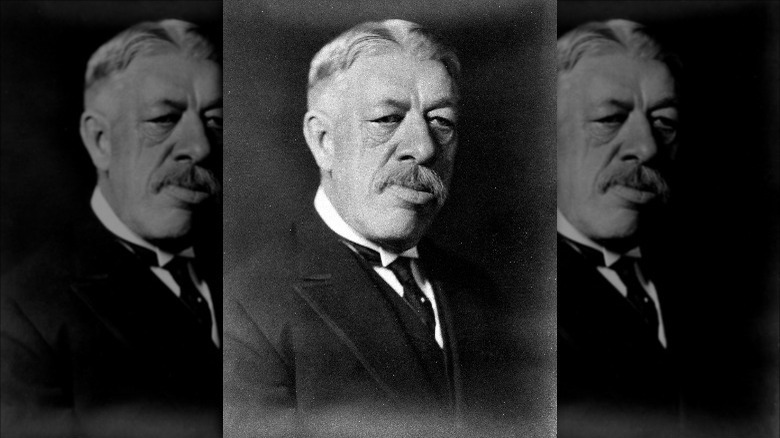Scientists Who Were Ahead Of Their Time
The history of scientific research is filled with smart people. Every time a smart person discovers something new or refines our understanding of some aspect of the universe we live in, it adds to our collective understanding of how things work. That allows us to do cool stuff like fly to the moon, or carry a link to all the world's knowledge and a supply of reaction videos in our pocket, or get a new heart after ours wears out.
Usually, that's a pretty smooth process. Scientists notice something, collect data about it, present a finding, and the rest of the scientific community decides if it's legit or not, then adds it to our pile of knowledge. Except sometimes scientists notice things that no one else notices, and the world thinks they're crazy. Or they notice something the Powers That Be don't want to be true, and so they get thrown in jail (or worse). Or they just can't get anyone to listen to them. When that happens, when someone is way ahead of the curve, it can take years or even centuries before their work is accepted and their reputations restored.
In other words, you might not think science has a lot of drama, but you'd be wrong. Here are the scientists who were ahead of their time.
Gregor Mendel: The father of modern genetics
We live in a time when you can find out where your ancestors came from and what horrifying diseases are lurking in your genetic code simply by mailing away a sample of our precious bodily fluids. Everyone more or less accepts the general idea that there are these things called genes inside us that dictate a lot about our existence, from our physical appearance to our capabilities. For that, you can thank a guy named Gregor Mendel.
According to Nature, Mendel was born in what is today the Czech Republic in 1822. His family was poor, and in order to get him an education he became a monk. Then he spent a lot of time breeding pea plants. A lot of time. So much time that he noticed something no one else had: There was a predictable pattern in how many peas his hybrid plants grew. He had discovered the principle of genetic inheritance, and even coined the terms "dominant" and "recessive" in reference to genetic traits.
Naturally, no one believed him. As historian Robin Marantz Henig notes, when a few of his peers tried to replicate his experiments they chose to use hawkweed plants—which just so happened to reproduce asexually, meaning no genetic traits crossed over from other plants. No one knew that at the time, however, so everyone just concluded that Mendel had gotten things wrong.
Ignaz Semmelweis: Patron saint of hand-washing
Today it's considered common sense that there's a link between washing your hands and staying healthy. In fact, most people today won't even eat a meal without washing their hands, much less perform surgery on someone. But as recently as the mid-1800s a majority of medical professionals thought it was just fine to go directly from performing an autopsy on a dead body to operating on a live one without even walking past a bar of soap on their way.
As PBS NewsHour tells us, there were physicians who made the connection between handwashing and mortality rates throughout history—but none as loudly as Ignaz Semmelweis. Working at the Vienna General Hospital, Semmelweis noticed that women had a higher rate of infection after childbirth in the hospital than with midwives, and figured out why when he saw that the surgeons worked with corpses in-between birthing babies.
The Encyclopedia Britannica reports that when Semmelweis ordered the students and doctors under him to wash their hands with chlorine before delivering babies, mortality rates dropped from nearly 19% to less than 2%. But that didn't win him any converts: His fellow doctors were insulted that he would suggest they were the cause of disease instead of the cure, and mocked him mercilessly. After years of trying fruitlessly to have his findings taken seriously, he suffered a breakdown in 1865 and died in a mental hospital—from an infected wound he'd suffered while operating.
Ludwig Boltzmann: Pioneer of atomic theory
The weird thing about physics is that as you drill down into smaller and smaller aspects of our reality, things get weirder and weirder. You can understand why people resisted the idea that a solid hunk of rock was actually composed of tiny atoms bound together by mysterious forces—although it might be surprising to learn that this was still a controversial concept in the early 1900s, just as Albert Einstein unveiled his revolutionary theories.
As noted by the Encyclopedia Britannica, Ludwig Boltzmann found out just how much people hated the idea when he published several papers in the 1870s theorizing that the observable qualities of matter (temperature, pressure, etc.) were dictated by a statistical relationship between atoms—specifically, he tried to prove that heat was a product of atomic movement. As reported by BBC Earth, his peers in the scientific community were not at all receptive to his theories, and he spent his life trying to convince people he was right—which, of course, he was. Today his theories are the foundations of modern physics.
Sadly, historian Carlo Cercignani tells us that Boltzmann, who probably suffered from manic depression, despaired of ever having his theories accepted. He completed suicide in 1906 only a few years before he was vindicated by the scientific community.
Ada Lovelace: The first ever programmer
Ada Lovelace was the daughter of Lord Byron, the prolific and legendary poet. As noted by The Computer History Museum, her mother, Annabella Milbanke, had been trained as a mathematician, and insisted that her daughter receive a similar education—very unusually for a woman of her position in the early 1800s.
When still a teenager, Lovelace met Charles Babbage, a famous scientist and inventor, and he showed her some of the work he'd done on what he called The Difference Machine, capable of automatically performing calculations. Lovelace was hooked, and the two struck up a correspondence. When Babbage began working on what is widely regarded as the earliest working computer, known as The Analytical Engine, The New Yorker reports that he asked Lovelace to translate a paper written about the contraption. She did so, adding her own ideas—she explained how a computer would actually work, and even sketched out the earliest written programs.
Today, Lovelace's work is acknowledged as perhaps the most important early contribution to computer science in history. At the time her work was ignored—in part because of her gender. In fact, some tried to argue that she hadn't actually written those notes to Babbage at all, and it wasn't until the later 20th century that the field began to recognize her genius.
Galileo Galilei: The audacity of heliocentrism
Galileo Galilei is one of the most famous scientists in history, so most of us learned something about him in school. As History.com notes, he's generally considered the father of modern science, after all. That doesn't change the fact that the man was persecuted for teaching that the Earth wasn't the center of the observable universe—the Sun was.
Heliocentrism wasn't exactly new in the 17th century, but religious authorities didn't like it's implications—namely that the Earth hadn't been created as a singular and unique place at the center of the universe, but was just one of many rocks floating about in space around an apparently infinite number of other suns.
Smithsonian Magazine tells us that prior to publishing the book "Dialogue Concerning the Two Chief World Systems," in which he made the argument that the Earth revolved around the Sun instead of the other way around, Galileo was famous and celebrated. Part of Galileo's problem was his tone: He gently mocked those who refused to acknowledge scientific truth, and that rubbed a lot of Church leaders the wrong way. He was ridiculed, arrested (twice), imprisoned, and finally forced to recant his theories. He spent the last decade of his life under house arrest. Today he's lauded as a heroic genius, and no one blames him for saying what he had to say in order to survive.
Alfred Wegener: Figured out continental drift before everyone else
You may be familiar with the concept of Pangaea, a theoretical supercontinent that may have existed millions of years ago before slowly splitting into the seven continents we're familiar with today—Europe, Asia, North and South America, Antarctica, Africa, and Australia. For that you can thank Alfred Wegener.
As PBS explains, Wegener noticed that the coastlines of South America and Africa looked like puzzle pieces that had once fit together. The Encyclopedia Britannica notes that he wasn't the first to notice this, nor was he the first scientist to suggest that a "supercontinent" may have once existed. But prior theories about supercontinents had relied on the idea of subsidence—that much of the landmass of Pangaea had sunk, leaving behind the seven continents of modern times. Wegener was the first to suggest that the continents had actually drifted apart, proposing a theory of tectonic plates that slide around the globe.
Smithsonian Magazine reports that Wegener's theories were met with what could be described as rage: They were called "delirious ravings" and "pseudo-science." Wegener took the attacks in stride, and worked to refine his theory and counter arguments against it until his death in 1930 at age 50. It took another three decades before plate tectonics was accepted by the scientific community.
Aristarchus: The first heliocentrist
It's kind of amazing to realize that the most controversial idea in history was apparently any suggestion that the Earth wasn't the center of the universe. Plenty of wacky scientific theories get heard without much backlash, but up until very recently if you said the Earth orbited the Sun you could expect to be mocked, attacked, and possibly arrested.
In that sense, Aristarchus got off easy. As the Encyclopedia Britannica explains, he lived in the 4th century BCE and was one of the only scientists of his time to argue that the Earth went around the Sun, and that the stars we can observe from the Earth are very, very far away. As World History Encyclopedia notes, the prevailing belief at the time was that the Earth formed the center of all things, and that the universe was fairly small.
Aristarchus wasn't persecuted or put in jail, though there is reason to believe he abandoned his ideas about a heliocentric universe. Instead, he was largely ignored, with most of his peers preferring the geocentric or Earth-centered model of the universe since it conformed better to the casual observation of the world. It was more than 1,000 years before people started to take Aristarchus' work seriously.
Amedeo Avogadro: Author of Avogadro's Law
The Encyclopedia Britannica tells us that Amedeo Avogadro was born in 1796 to a wealthy, aristocratic family. A lawyer by trade, Avogadro enjoyed scientific pursuits in his spare time, which means that one of the biggest breakthroughs in chemistry came from a guy doing science as a hobby.
Chemistry World explains that the early 19th century was a period of rapid change in chemistry. Some old, incorrect beliefs were suddenly proved to be wrong, and a new and better understanding of the mechanics of the elements was coming into play. While scientists had the concept of atoms, the understanding of how they worked or how they combined into molecules was still kind of hazy.
The Science History Institute explains that Avogadro hit on something important: He postulated that different gases with the same temperature and pressure would have the same number of molecules. It's complicated, but this went against the common understanding of atoms at the time, so the idea met immediate resistance in the scientific community. One reason Avogadro got nowhere had nothing to do with his work: He was an outsider to the scientific community, and lived too far away from the centers of research to make his case. While Avogadro went on to professional success in chemistry, his theory was ignored until well after his death. Today in the field of chemistry it's known as Avogadro's Law.
Nicholas Copernicus: The Earth and the Sun again
Nearly 2,000 years since the idea was first suggested, Nicholas Copernicus resurrected the idea that the Earth goes around the Sun, and not the other way around. He put forth his carefully reasoned theory in the book "On the Revolutions of the Celestial Spheres" in 1530—but it wasn't published until Copernicus died in 1543.
As explained by the BBC, by this time Copernicus was a well-respected lawyer and administrator and pretty well-known as an astronomer, too. In fact, a few years before he finished his book the Church had asked him to consult on a new and improved calendar due to his expertise. But History.com notes that Copernicus wasn't entirely certain about his own theories—there were nagging problems he couldn't quite explain, and so he held back publication of "Revolutions" for fear of being mocked.
And he wasn't entirely wrong. When the book came out, reaction was muted. His fellow scientists admired his math, but they didn't believe him. There was no huge outcry at first, but when his theories began circulating the Church started suppressing his book with some enthusiasm. It was almost another 100 years before Copernicus' ideas were given their due following the work of Galileo Galilei and Isaac Newton.
William Harvey: A better understanding of blood circulation
In the list of apparently obvious things that were misunderstood for surprisingly long periods of time, blood circulation is right up there. Humanity has had some pretty nutty ideas about it—including the belief that the liver created blood from food, and the lungs pushed it around the body like a kind of biological bellows.
In fact, as the BBC points out, it wasn't until 1628 that someone challenged that idea. That someone was William Harvey, who was 50-years-old. Harvey was well-respected, and had served as physician to several English monarchs in his career. As medical historian Domenico Ribatti writes, Harvey performed experiments observing the working hearts of living animals, and figured out what was really going on. He published his findings in a book called "An Anatomical Study of the Motion of the Heart and of the Blood in Animals" in Germany, but it was more than two decades before it was translated into English.
Reaction was extremely negative. As the American Academy for the Advancement of Science tells us, an entire industry had grown up around the idea that bleeding people—draining blood from them—was good medicine, and many of Harvey's fellow physicians lashed out at him for his theories. His medical practice suffered, and by the end of his life he'd become a hermit in order to avoid contact with his peers.
Johannes Kepler: Ellipses just aren't sexy
Johannes Kepler is part of that small club of scientists who insisted the Earth went around the Sun, and his reward was to be completely ignored. He was also one of the first scientists to work with what today we call the Scientific Method of testing theories and refining data.
Kepler was brilliant in his own right. As the Encyclopedia Britannica explains, he built on the work of Nicolaus Copernicus, who presented a heliocentric model of the solar system in which the Earth revolved around the Sun—a model that had sparked a lot of pushback from the religious authorities, who thought it impossible God would create a universe where Earth was just another planet. Kepler refined Copernicus' model into a system that showed how all the planets moved around the sun. Importantly, he identified elliptical orbits that weren't perfect circles. This explained a mystery that had persisted for thousands of years: Why Mars appears to move backwards from time to time.
As Space.com explains, Kepler wasn't rejecting a religious view of the universe. In fact, he thought he was actually revealing God's design, and believed it more appropriate that a Creator would place the Sun at the center of everything. That wasn't good enough for his critics, however; Kepler's work was largely ignored in his lifetime. It wasn't until after his death that observations of planets transiting the Sun confirmed Kepler's calculations.
William B. Coley: Immunotherapy's pioneer
Cancer has been with us since the dawn of time. The American Cancer Society notes that the earliest descriptions of cancer date back more than 5,000 years. Today we have a wide range of potential treatments, including the promising field of immunotherapy, which attempts to get the body's own immune system to attack and destroy cancer cells. For that, we can thank Dr. William B. Coley. As Discover Magazine reports, in 1891 Coley was a 29-year-old doctor working at New York Memorial Hospital. Medical science was well aware of cancer at the time, but there were almost no treatments available for the disease.
Coley noticed something odd, though: When cancer patients contracted a specific, usually deadly Streptococcus bacterial infection, their cancer vanished. He researched the phenomenon and managed to dig up 47 recorded cases. In a time before the Food and Drug Administration (FDA), Coley moved directly to human experimentation, finding a local drug addict named Zola with a terminal, inoperable tumor to inject with bacteria. After five treatments, Zola got very ill—but his tumor began to shrink. Within two weeks, it was gone—and Zola lived another eight years, cancer-free. Put simply, Coley had discovered immunotherapy.
Unfortunately for Coley, future experiments produced inconsistent results. While he continued to be a well-respected cancer surgeon, the medical community largely disregarded his research. In 1962, the FDA made his treatment illegal, but today a resurgence of immunotherapy research has restored Coley's reputation.
